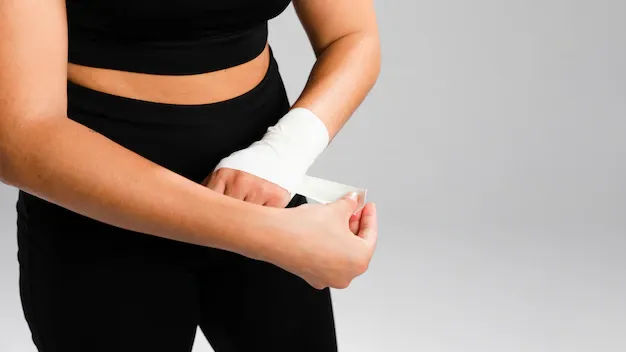john@lee-mat.com
+86-13510662576

GET QUOTE
Wrist Straps vs Wrist Wraps: What's the Difference?
In the world of fitness, choosing the right gear can be a game-changer. If you've ever been confused about the difference between wrist straps and wrist wraps, you're not alone. Let's break it down in simple terms.
What is Wrist Straps?
Wrist straps are like a reliable sidekick for heavy lifting. Imagine gearing up for that intense deadlift session at the gym. Wrist straps are your silent partners, providing that extra support your wrists need to conquer those heavy weights.
When you slip on wrist straps, they loop around your wrists and the bar, creating a secure connection. This added stability ensures your wrists stay straight during heavy lifts, preventing unnecessary strain. So, if you're into powerlifting or anything that involves lifting big, wrist straps are your go-to buddies.
Why and When to Use Wrist Straps?
Weightlifters commonly turn to wrist straps when lifting heavy weights, especially near their maximum capacity. Grip strength can become a limiting factor in such scenarios, preventing experienced lifters from pushing their boundaries. In the gym, it's uncommon to witness someone attempting a heavy deadlift without relying on straps, and for good reason. Wrist straps alleviate the need for intense grip strength, ensuring the wrist stays securely connected to the bar. This not only eliminates the risk of grip failure but also empowers lifters to perform more repetitions with confidence.
What is Wrist Wraps?
Now, let's talk about wrist wraps. Unlike wrist straps, wraps are all about stability throughout your entire workout, not just the heavy sets. Whether you're pumping iron, doing bodyweight exercises, or even some cardio, wrist wraps provide consistent support.
Wrist wraps are like the steady rhythm in your workout playlist. They wrap around your wrists snugly, offering support to the joint. This helps maintain proper wrist alignment during various exercises, reducing the risk of injuries and ensuring a smoother workout experience. So, if you're looking for stability across the board, wrist wraps are your workout playlist's constant beat.
Why and When Should You Use Wrist Wraps?
Wrist wraps play a crucial role in stabilizing your wrist and minimizing the risk of injuries, especially during intense weightlifting sessions. To make the most of their benefits, it's advisable to reserve wrist wraps for days dedicated to heavy lifting, particularly when engaging in pressing exercises like the snatch, jerk, overhead press, or bench press. A helpful guideline is to employ wrist wraps when you're surpassing 80% of your one-rep max or during sessions demanding consistent lifting close to your maximum capacity.
Choosing the Right Gear for You
Now that we know the basics, how do you decide which one to go for? It's simpler than you think. If you're aiming for personal records in heavy lifts, go for wrist straps. They're designed to handle the extra load and keep your wrists in check.
On the other hand, if your workout routine is diverse, incorporating a mix of exercises and intensity levels, wrist wraps might be the better choice. They offer versatile support, ensuring your wrists stay in top-notch condition, no matter the exercise.
Conclusion
In the wrist straps vs. wrist wraps debate, there's no one-size-fits-all answer. Your choice depends on your workout style and goals. Wrist straps are the powerlifters' weapon, providing that extra oomph for heavy lifts. Wrist wraps, on the other hand, are the all-around support system, offering stability for every rep, every exercise.
So, whether you're chasing those one-rep maxes or aiming for a well-rounded fitness journey, choose the gear that complements your goals. Wrist straps and wrist wraps are like the yin and yang of gym accessories – each has its place, and the key is finding the balance that suits you.


